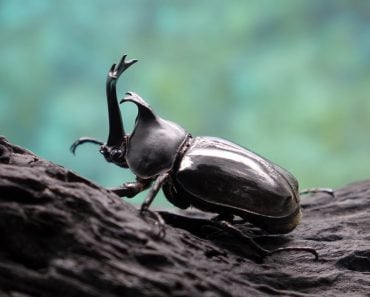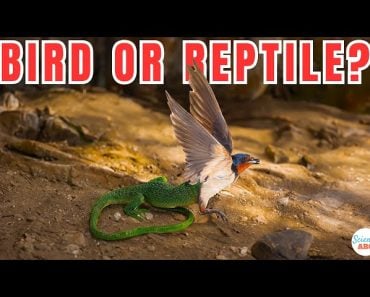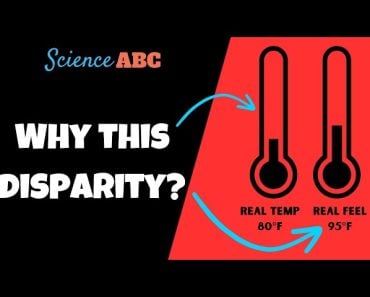Table of Contents (click to expand)
An endotherm, often referred to as a warm-blooded animal, relies on its own internal metabolic activity to generate heat and maintain a stable body temperature, rather than relying on external sources, such as the sun.
When you step outside on a brisk autumn morning without wearing a jacket, the chilly temperature is probably the first thing you notice. Your body notices too, because it will now have to work harder to keep your body temperature at a stable and acceptable level. You might see the first physical signs of this as you shiver, your skin pimples up into goosebumps, and you instinctively tense some of the muscles in your arms and back. However, what our body doesn’t do is allow our internal temperature to drop—at least not right away. Why are we able to regulate our internal temperature without even thinking about it?
Quite simply… because we’re endotherms!
Recommended Video for you:
What Is An Endotherm?
An endotherm is any organism (primarily birds and mammals) that maintains a stable internal temperature by means of the heat released through internal functions, namely metabolic reactions in the organs. This is the opposite situation as ectotherms, so-called cold-blooded animals, which rely on external sources of heat to regulate their body temperature. A lizard lying on a sunlit rock is literally heating its body up in the sun, which provides it with energy to hunt and be more active. Ectothermy is represented in lizards, reptiles, fish and invertebrates, including insects.
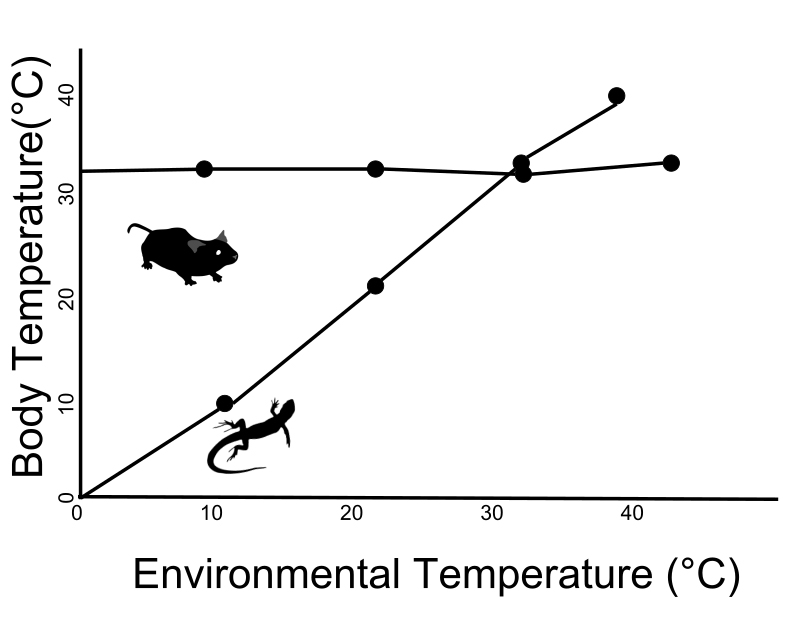
In an average person, the metabolic energy generated in the organs of the torso represent more than 60% of the heat produced by the body, while the brain chips in an additional 15-16%. All of this heat is needed to maintain an ideal internal temperature for the organism, particularly in cooler environments, so the organs can operate efficiently and ensure survival. This ideal temperature range may be different between species, based on other adaptations and variations in their respective environments.
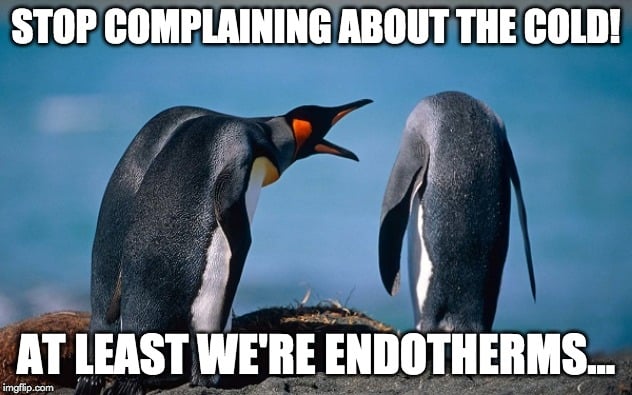
For human beings, the target temperature is 98.6 degrees Fahrenheit within the body; this allows for a range of safe temperatures both above and below the ideal point where the body can still operate safely. For example, in the cases of standing outside in the winter wind or running a marathon at the height of summer, we must be able to function in variable conditions, even if our body temperature is slightly higher or lower than normal. There are natural safeguards against the body exceeding this range, such as sluggishness at high temperatures, sweating, shivering, and a number of other adaptations that will be explained in the section below.
Endotherm Adaptations
Since endotherms rely on metabolic activities to generate heat, they require a much more significant intake of nutrients, namely sugars and fats, to produce energy. When people talk about burning calories, that is what the body does constantly, consuming and utilizing the raw materials we eat to generate heat and maintain our internal temperature. When we run out of resources, or when the body is stressed beyond its normal temperature range, there are some other adaptations that can help keep us regulated.
Once the heat is generated, it is important that we retain it, as a great deal of energy and time is spent in acquiring resources and food. The vast majority of mammals and birds have physical characteristics to aid in this, such as fur and feathers to prevent heat loss. These structural elements help to prevent heat from escaping from the large surface area of the skin. This is more challenging in smaller animals, since the ratio of surface area to volume is smaller. They must work even harder to maintain their internal temperature, making food acquisition a critical and constant concern.
Some other common adaptations are large layers of blubber (in the case of marine creatures), or minutely adapted heat exchange processes in the circulatory system, in which warmer blood from the heart is pumped past colder blood returning from the animal’s extremities. In the case of humans, however, who have largely lost full body hair coverage (in comparison to our great ape cousins), developments like clothing, fire and central heating systems allow us to maintain our warmth in cold climes. Furthermore, shivering is a great tactic employed by humans (and other warm-blooded animals) in cold weather. These rapid skeletal muscle contractions generate heat by burning energy rapidly, and do their part to keep our exposed areas warm.
For endotherms, it is just as dangerous to overheat as it is to lose heat, so a number of other mechanisms are in place to help drop our temperature, when necessary. If you’ve ever worked out or gone for a hike on a hot day, you know that it’s hard to keep your body from sweating. Sweating is a way of cooling down the body through the process of evaporation, as heat is pulled from the body through this thermodynamic process. The same basic premise is at play when animals pant. When your dog’s tongue hangs from its mouth during the “dog days” of summer, heat exchange is occurring on that mucus membrane, allowing the dog to cool off thanks to evaporation.

Other animals have more drastic changes to cool off, such as shedding thick or winter fur as the seasons change, or simply relocating for a period of time (seasonal migration) to areas where it requires less effort to regulate their body temperature. Humans have some of this “migratory” behavior, often traveling during the winter to exotic locales, or spending most of their time in air-conditioned malls and houses at the peak of summer! Humans certainly have the most advanced and least natural forms of manipulating their environmental conditions, but the root cause is the same—we are still an endothermic species!
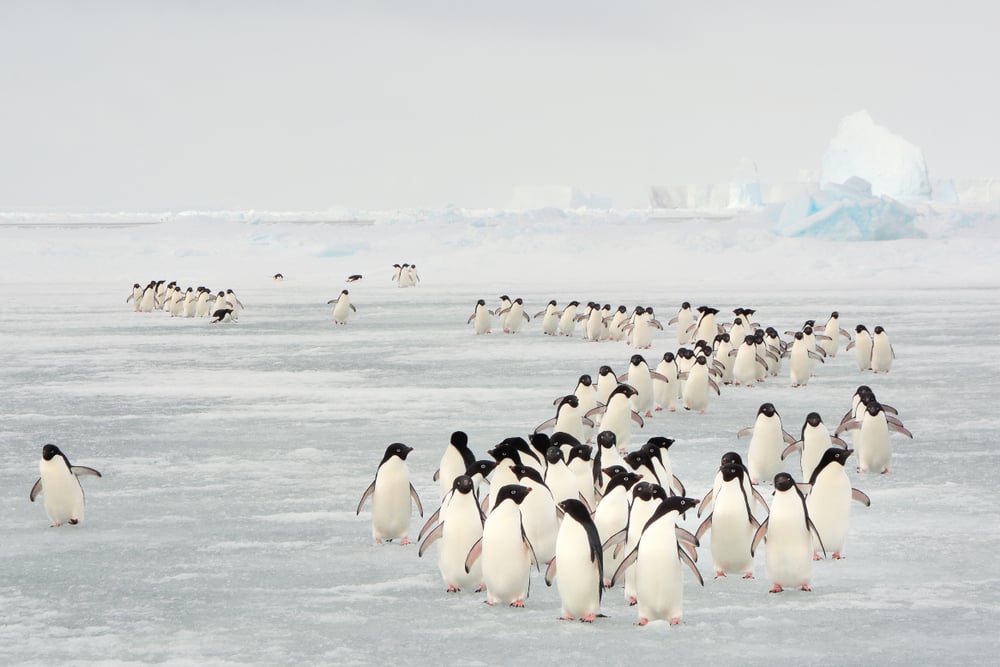
The Evolution Of Endothermy
What might surprise you is that endothermy is a relatively new phenomenon; it appeared roughly 250-260 million years ago, near the end of the Permian Period. However, as some of you may know, life has been around on this planet for about 3.5 billion years. That means, for billions of years, organisms operated as ectotherms, responding to external conditions that determined their metabolic rates, activity levels and survival.
There have been many theories proposed as to why endothermy evolved, but to properly understand this, it’s important to first know that endothermy evolved multiple times, leading to birds and mammals from at least two different evolutionary lineages. Most experts are skeptical that endothermy evolved solely through its benefits of thermoregulation; instead, some believe that it was in response to a change in aerobic metabolism. As those creatures with a higher aerobic capacity were naturally selected (meaning they could take in and process more oxygen), their endurance and ability to sustain exertion also increased. Rather than the anaerobic lifestyle, which is used by most ectotherms to power their activity in short bursts, an aerobic metabolism meant increased movement and activity, and the ability to secure more resources.
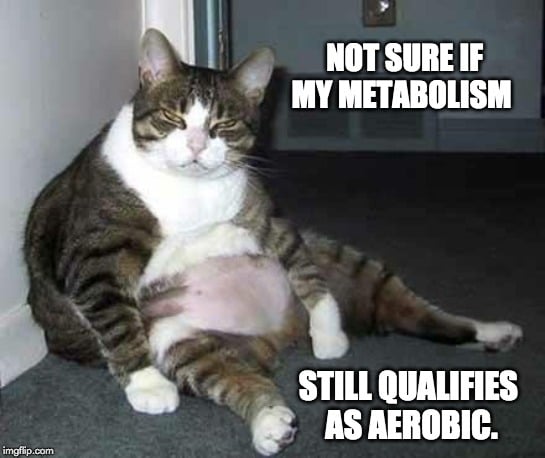
Leading on from this idea of some creatures being selected for higher aerobic capacity, their higher rates of activity and movement would have led to the evolution of a higher ideal body temperature range. Over the course of millions of years, endotherms were better able to support their needs by hunting and foraging more often, satisfying their nutrient needs through movement, and maintaining a higher body temperature as a result. This is a rudimentary explanation of this incredibly complex selection process, but most experts agree. The importance of sustained activity helped groups (at multiple times throughout evolutionary history) gradually develop increased aerobic capacity, eventually leading to a metabolic preference of endothermy, over ectothermy.
For the record, endotherms can also engage in anaerobic respiration, but it is used as a secondary option—a reserve tank of energetic fuel, so to speak. If you are engaging in a high-intensity workout and the amount of oxygen being supplied to the muscles is insufficient, the body can switch over into anaerobic respiration. In this process, our “fast-twitch” muscles are engaged, which create energy much faster than slow-twitch muscles, but in a less efficient way. Also, anaerobic respiration generates lactic acid, and causes the muscles to fatigue much faster. However, the fact that anaerobic respiration remains an option for endotherms is a testament to our evolutionary roots!
A Final Word
Human beings, along with every other mammal and bird you’ve ever seen, relies on endothermy to survive. Our constant burning of energy through metabolic processes helps us maintain a proper body warmth, while also providing the accessible energy for prolonged activity and flexibility in our chosen environments. While it may sound lovely to bask in the sun all day to ensure you have enough warmth, endothermy has allowed us to become the species we are today!
References (click to expand)
- Endotherm.
- Hedrick, M. S., & Hillman, S. S. (2016, February 1). What drove the evolution of endothermy?. Journal of Experimental Biology. The Company of Biologists.
- Shabtay, A., & Arad, Z. (2005, July 15). Ectothermy and endothermy: evolutionary perspectives of thermoprotection by HSPs. Journal of Experimental Biology. The Company of Biologists.
- Grigg, G. C., Beard, L. A., & Augee, M. L. (2004, November). The Evolution of Endothermy and Its Diversity in Mammals and Birds. Physiological and Biochemical Zoology. University of Chicago Press.
- Bennett, A. F., & Ruben, J. A. (1979, November 9). Endothermy and Activity in Vertebrates. Science. American Association for the Advancement of Science (AAAS).
- Hulbert, A. J., & Else, P. L. (1989, January 1). Evolution of mammalian endothermic metabolism: mitochondrial activity and cell composition. American Journal of Physiology-Regulatory, Integrative and Comparative Physiology. American Physiological Society.
- Gillooly, J. F., Gomez, J. P., & Mavrodiev, E. V. (2017, February 22). A broad-scale comparison of aerobic activity levels in vertebrates: endotherms versus ectotherms. Proceedings of the Royal Society B: Biological Sciences. The Royal Society.



